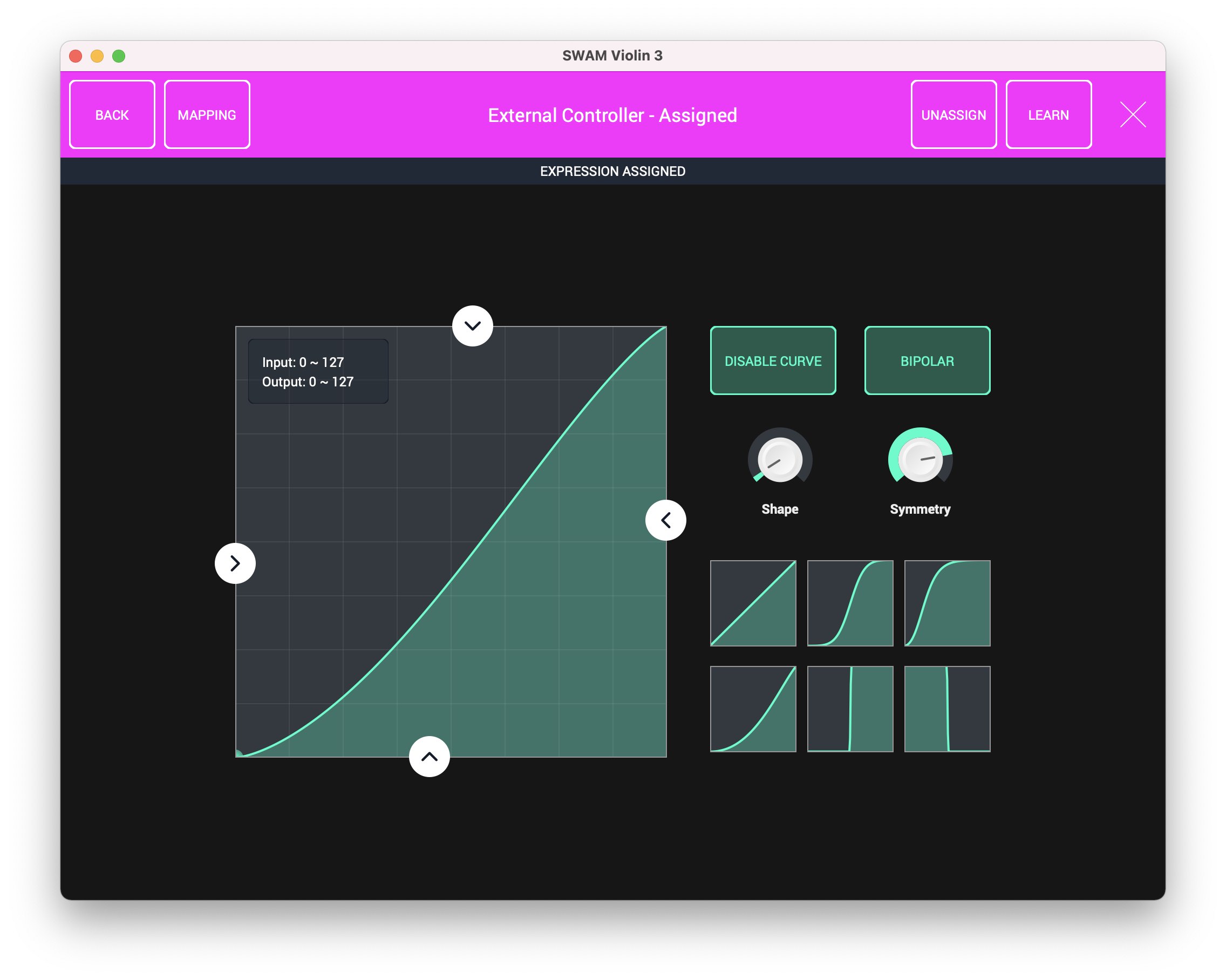You need to simulate what happens in real life, which means you need to add an instrument for each player of the section who plays slightly differently from the others.
SWAM Solo Strings is a collection of products that includes SWAM Violin, SWAM Viola, SWAM Cello, and SWAM Double Bass. Developed using the Digital Waveguide Synthesis (Prof. Julius Smith – Stanford University) combined with the Synchronous Waves Acoustic Modeling technology. The SWAM Solo Strings package comprises violin, viola, cello and double bass. While the violin's default timbre works well in a classical context, I generally preferred the more open sound of the 'Venezia S1' preset; for pop styles, you can use the brightness control to introduce more bite, and for those occasions when your guitarist turns up to 11 (ie. All the time), increasing the bow. This bundle contains ALL FOUR of the SWAM Solo String instruments- SWAM Violin, SWAM Viola, SWAM Cello, and SWAM Double Bass- in a convenient cost-saving bundle. Forget about the typical limitations of traditional samplers: SWAM Solo Strings Bundle is developed by Audio Modeling using the SWAM Technology (Synchronous Waves Acoustic Modeling), a.

Let’s say you want to create an ensemble of 6 violins.
Audio Modeling Swam Violin Music
SWAM Violin is the solution. It was developed using Audio Modeling's proprietary SWAM-S engine, a powerful physical modeling technology derived from the digital waveguides approach. Real-time controllable via MIDI controllers, SWAM Violin requires only the smallest footprint to create the perfect organic consistency resulting from the endless. Of SWAM instruments and intend to use the SWAM instruments as AAX plugins, you will need to run the SWAM installer once again, so they get copied in the Pro Tools plugins’ folder. The End User License Agreement (EULA) and the instrument presets will be installed in /Users/Shared/Audio Modeling/SWAM/.


- In a DAW, create one track for each player of the section and load a SWAM Violin on each.
- Each instance of the violins must behave differently from the others. To do that:
- Slightly detune each instance (from -15 to +15 cents).
- Select a different Instrument body for each instance (for example, Cremona, Firenze, Venezia)
- Slightly change the Bow Position, Bow Pressure, String Resonance, Rosin, Timbral Correction, and so on.
- Write the sequence for the first violin, copy it to the other tracks, then slightly randomize the starting point and the duration of each note for each track (in some DAWs, you can use the Humanize function).
- Turn off the internal reverb, insert a reverb plug-in on each track, and set different Early Reflection times (for example, from 20 to 40 ms). Mix and pan the positioning for each instance.
3. Apply a final reverb to the whole section.
Of course, running multiple instances of SWAM plus external reverbs will require a lot of CPU power. If you run out of power, you can render some tracks to audio and work on the remaining ones.
You need to simulate what happens in real life, which means you need to add an instrument for each player of the section who plays slightly differently from the others.
Let’s say you want to create an ensemble of 6 violins.
- In a DAW, create one track for each player of the section and load a SWAM Violin on each.
- Each instance of the violins must behave differently from the others. To do that:
- Slightly detune each instance (from -15 to +15 cents).
- Select a different Instrument body for each instance (for example, Cremona, Firenze, Venezia)
- Slightly change the Bow Position, Bow Pressure, String Resonance, Rosin, Timbral Correction, and so on.
- Write the sequence for the first violin, copy it to the other tracks, then slightly randomize the starting point and the duration of each note for each track (in some DAWs, you can use the Humanize function).
- Turn off the internal reverb, insert a reverb plug-in on each track, and set different Early Reflection times (for example, from 20 to 40 ms). Mix and pan the positioning for each instance.
3. Apply a final reverb to the whole section.
Of course, running multiple instances of SWAM plus external reverbs will require a lot of CPU power. If you run out of power, you can render some tracks to audio and work on the remaining ones.
I've got the SWAM Violin. I want to play notes with some variation. I don't have a keyboard to do this. Too many complications that won't allow me to, so I have to stick to a compact design. I also can't play instruments full stop because of cognitive issues.
I use FL Studio, I managed to get the VST to work by changing expression. But I've encountered a new issue where I can't change the vibrato or pressure with any of the FL Studio channels within a pattern. And the mapping for some reason on this software only lists CC? I don't know what that is, I just know the notes on an FL Studio pattern. How do I assign those to the pattern?
For reference, I used to use instruments from a Kontakt library, which had a simple variation change using a single note on the pattern. I can set for example, vibrato, to B#0. It would play the following notes with vibrato.


Audio Modeling Swam Violin Videos
Note: I half solved this problem, but it's inconvenient. I can go to the parameters, right click the CC, and create automation link. But it isn't that convenient, since there's a bug in FL Studio where deleting automations won't delete them permanently from a pattern. It will remain.
Also, are there any presets for this violin? Mine sounds all computer-y. I've tried different models and settings and none seem to work. Everyone else's violin sounds different to mine. What's the problem here?